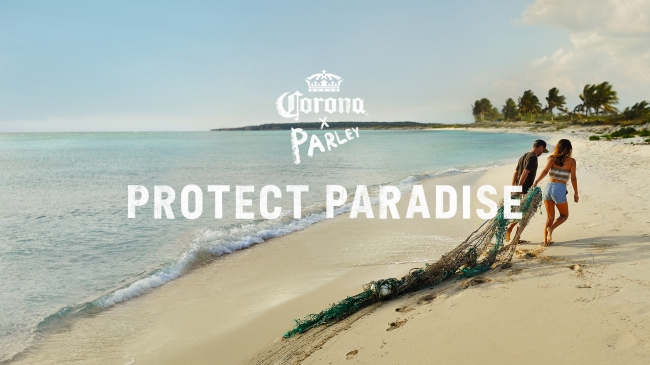Last week I stocked up on Corona for a gathering at home organised by one of my daughters, Chloé. And whilst putting the beers in the fridge, I noticed an on-pack promotion: Plastic Doesn’t Belong in Paradise – 1 Pack = 1 metre of Beach Cleaned. This struck me as a great example of ‘brand social responsibility’ (BSR).
In contrast to ‘CSR’ (corporate social responsibility), where a company simply donates to a charity, with BSR the brand has a much more active role. This should, in turn, deliver more impact for the brand in terms of both brand equity and sales.
I decided to dig into the Corona BSR program in more detail, and share my findings below, including one suggestion for improvement.
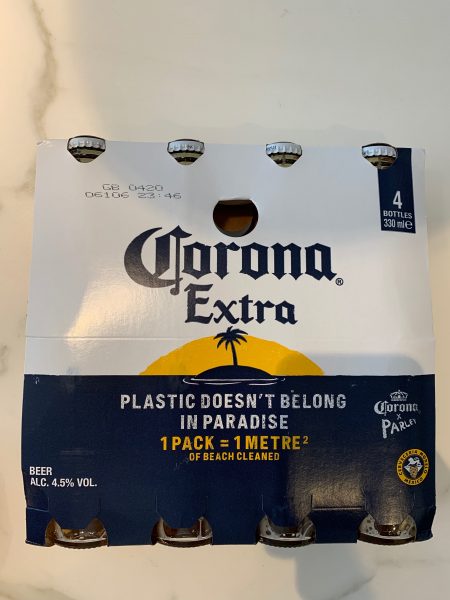
1. Match a passion point with your brand story
When working on brand activation, we help teams find a match between a relevant ‘passion point’ for the brand’s users and the brand story. This ensures the brand has a relevant role to play, and that the activation helps bring to life the desired positioning.
In the case of Corona, the beach is a central part of the brand’s positioning, and is also a distinctive brand property used in communication for many years (see below).
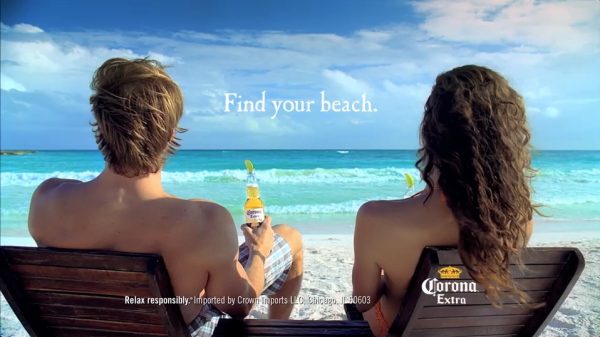
The program with Parley for the Oceans to protect islands is a perfect match between this brand world and a highly relevant passion point for young people, as the brand describes on its website:
Corona was born at the beach, surrounded by ocean. We believe that life is better lived with salty air in our lungs and sand beneath our toes; it’s where we feel at home. But today, that home is in grave danger from plastic. This material we use every day is drowning our oceans, killing our wildlife and destroying our beaches. That’s why we are teaming up with Parley for the Oceans to protect 100 islands by 2020.
2. Create an ambitious activation PROGRAM
Many brands are taking positive action to reduce the environmental impact of plastic. Another beer brand, Carlsberg, recently grabbed the headlines with a smart new multi-pack that removes plastic rings by gluing the cans together, for example.
But what is impressive about Corona is their ambitious target of ‘protecting 100 islands around the world by 2020’, and the series of ‘chapters’ of activity put in place to help them achieve it. This program of activity creates the ‘fresh consistency’ needed to build distinctive memory structure for Corona:
- Beach clean-ups: in 15+ countries (e.g. Maldives, Mexico, Dominican Republic, Chile, Indonesia, Italy, South Africa)
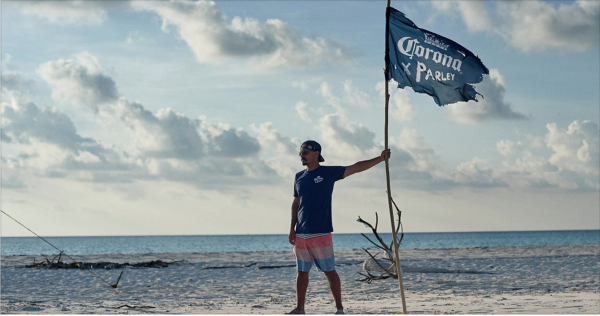
- Plastic-free six pack rings: pilot of rings made from plant-based biodegradable fibers, to avoid the problem of plastic rings ending up in the ocean (1)

- World Oceans Day fashion range: Hawaiian shirts made from recycled plastic, by Spanish designer Adolfo Correa. On closer inspection, the shirt is dotted with plastic objects found on the beach (2)
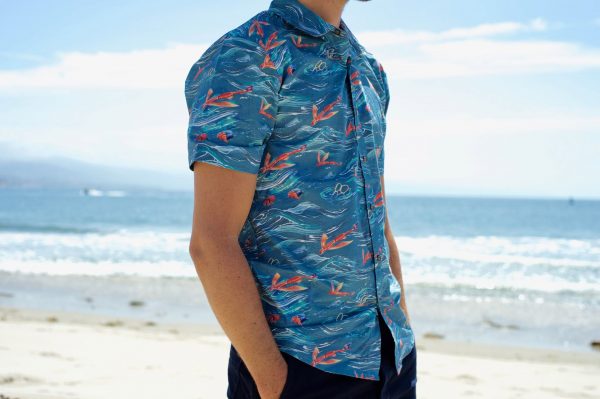
- Impactful billboard: built in London’s Old Street from a thousand kilograms of ocean plastic
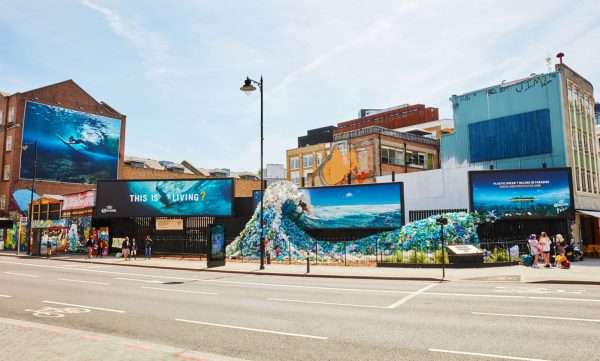
3. Deliver tangible impact
I believe it’s important for brands pursuing BSR programs to be specific about the tangible impact they are making. This avoids the risk of people thinking that a brand is trying to ‘greenwash’ them, by attaching their name to a cause but then making limited impact.
With Corona, I like the way the 4-pack I bought made a clear and tangible promise, to clean 1 metre of beach per pack bought, rather than just donating an arbitrary amount of money per pack.
And at a larger level, a counter on the Corona x Parley website (3) shows the positive impact of the beach clean-up program. I was particularly impressed by the 25,000+ volunteers involved, creating a large group of people engaged with both the cause, and also hopefully the brand too. And the brand seems to have already beaten its target of protecting 15o islands by 2020 (although maybe ‘cleaning’ an island doesn’t mean it is fully protected?)
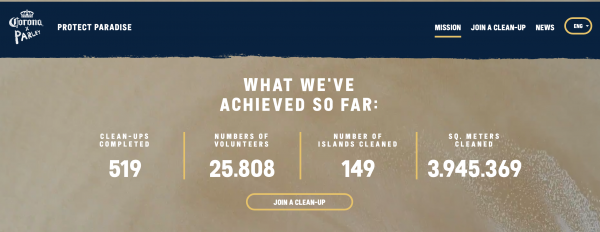
The high levels of involvement are driven partly by the brand offering an easy sign-up mechanism that uses Facebook.
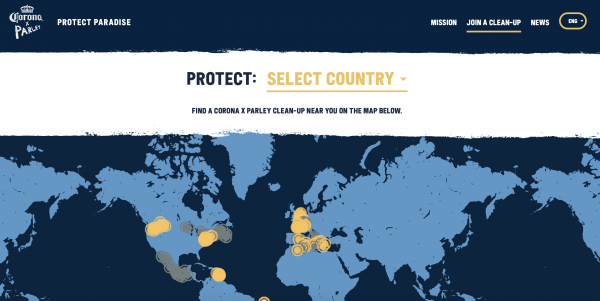
- Link to product?
One area for improvement would be a tighter link to the product occasion, the third component we use with teams when working on brand activation.
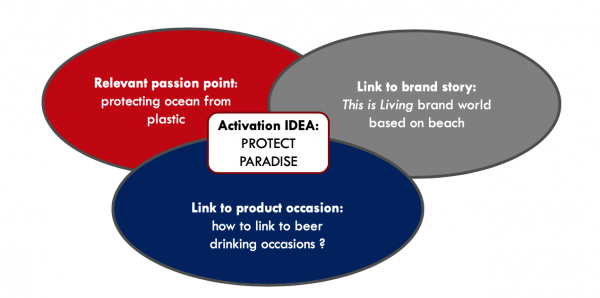
First, Corona could encourage people to organise Protect Paradise Parties at home. The brand could provide tools to set up an event and invite people, such as widgets for Whats App, Snapchat and Facebook. Protect Paradise Party organisers could then by encouraged to share photos of their event on social media, including a counter indicating how many metres of beach they had protected by partying!
Second, could Corona make a link between the Sunset Festivals it organises and beach clean-up program? For example, beach clean-up volunteers could get two invites to a Sunset Festival and be encouraged to share the event on their social media feeds.
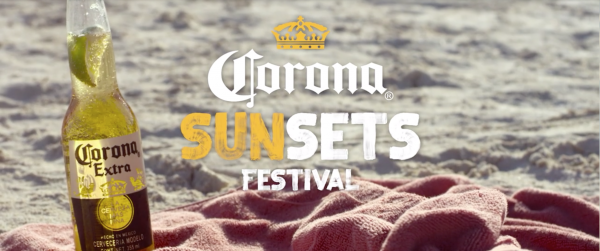
In conclusion, Protect Paradise by Corona is a great example of a Brand Social Responsibility program, with a series of chapters creating fresh consistency to build brand equity, whilst making a tangible impact on an important social issue.
We explore social missions in depth on our brandgym Mastering Brand Growth program. If you’d like more info on the program, simply pop your name and email in the form below (we’ll also send you the weekly brandgym blog email and brandgym Academy news, but you can opt out at any time).
Sources:
1. https://www.businesswire.com/news/home/20181127005152/en/Corona-Launches-Plastic-Free-Pack-Rings
